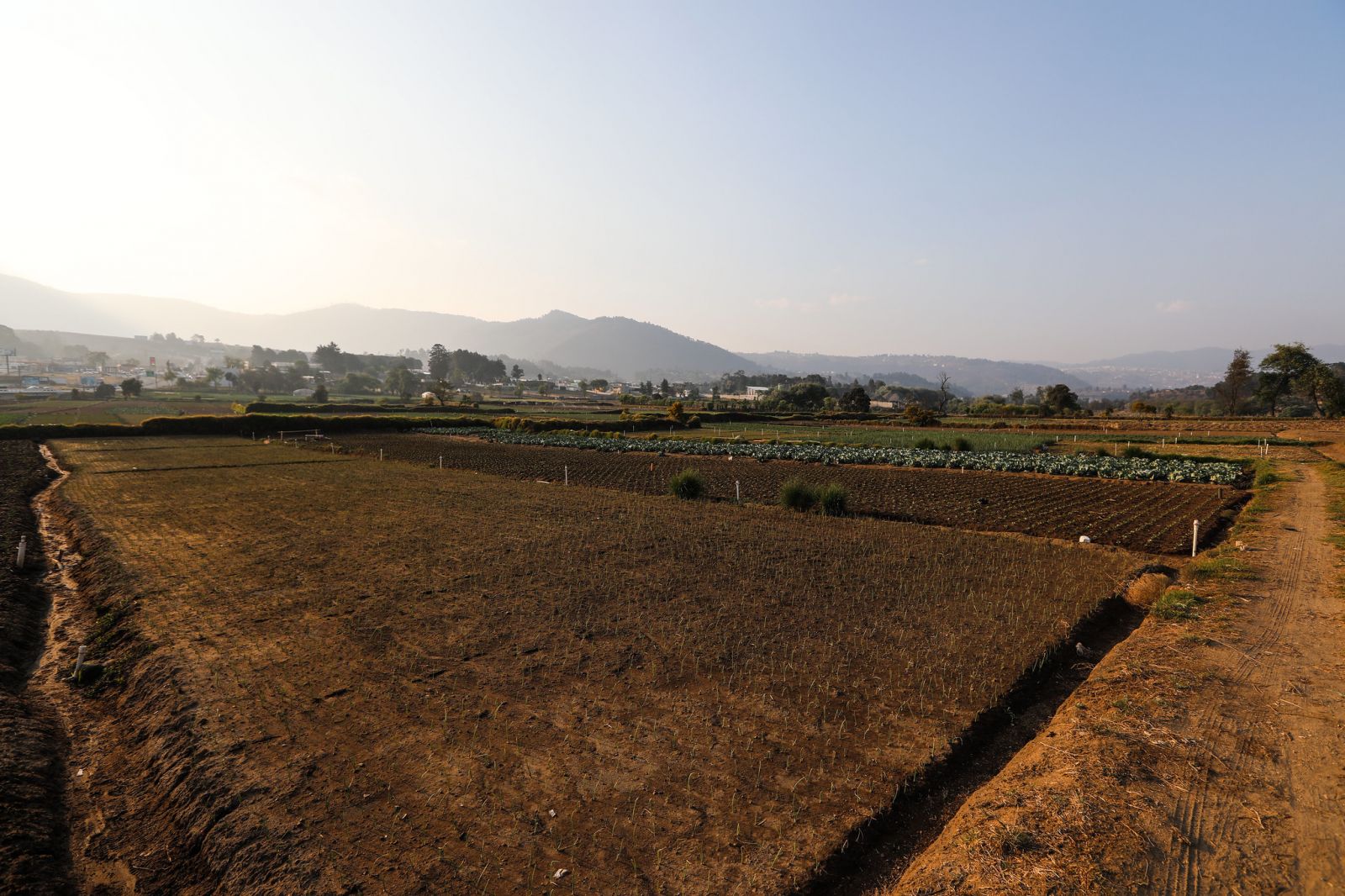Combating drought in the Dry Corridor of Guatemala
- From
-
Published on
17.06.19
- Impact Area

Around the world, climate variability provides increasingly challenging environments that farmers must adapt to in order to ensure their food security. Today, the United Nations recognizes one of those challenges—drought—with the World Day to Combat Desertification and Drought. In Guatemala, one region that faces droughts is known as the Dry Corridor. The name hints at the struggles faced by those who live and cultivate there. A multiple-year drought has made matters worse.
Over the last couple of years, the CGIAR Research Program on Climate Change, Agriculture and Food Security (CCAFS) has been working on enhancing sustainable agriculture and tackling the level of malnutrition in the Dry Corridor in Guatemala. In 2015, CCAFS and the International Center for Tropical Agriculture (CIAT), together with some local/regional actors, established a Local Technical Agro-climatic Committee (LTAC) in Chiquimula, a municipality in the Dry Corridor.
LTACs are innovating the way that local stakeholders can be informed about the expected climatic variations in the region, and how these can affect their crops. The LTAC in Chiquimula allows for an understanding of the needs of farmers, establishes an open and clear dialogue about seasonal climate forecasts, helps devise measures to reduce crop losses, and connects the demand for agro-climatic products with supply.

A subsistence farmer’s field in Quetzaltenango in the Dry Corridor region of Guatemala.
Photo: D. Pons (IRI)
This process is critical during climate events, such as droughts, which can be devastating for rural communities in areas such as the Dry Corridor. During such events, producing and sharing relevant agro-climatic information in a timely manner is crucial for farmers and other decision makers to make management decisions that affect their livelihoods.
Other related activities in Chiquimula concerned designing and carrying out two emergency drills to assess and improve drought response. This exercise was funded by CCAFS and the Inter-American Institute for Global Change Research (IAI). Drills are an important element of disaster management that can help increase preparedness and reduce the risk of real‐time failure. Yet, they are not applied systematically to slow‐onset disasters such as a drought, which causes damage that is not instantly apparent and thus does not solicit immediate action.
In Guatemala, a period of drought, known as the “canícula,” can have severe impacts on the livelihoods and food security of smallholder farmers. By implementing part of the Ministry of Agriculture, Livestock and Food’s institutional response plan for drought, this exercise intended to improve preparedness for drought response. By supporting such activities, CCAFS and its partners are trying to ensure that rural communities have the best information and tools to respond to the challenges experienced in areas such as Guatemala’s Dry Corridor.
Read more:
- Blog: Olopa Climate-Smart Village, Guatemala
- Blog: Study explores how emergency drills can serve as a tool to assess and improve institutional preparedness for drought response in Guatemala
- Blog: Agro-climatic information helps prepare for El Niño in Central America
The project is implemented by the CGIAR Research Program on Climate Change, Agriculture and Food Security (CCAFS) and the International Center for Tropical Agriculture (CIAT).
Related news
-

CGIAR Climate Security team pilots a new research approach for the development of Nature-based Solutions in fragile settings
Ibukun Taiwo27.11.25-
Climate adaptation & mitigation
Responding to complex crises requires new systemic research approaches that help identify entry poin…
Read more -
-

Drones prove their worth in measuring livestock methane in Africa
International Livestock Research Institute (ILRI)26.11.25-
Mitigation
In May 2024, the International Livestock Research Institute (ILRI) and partners shared news of the…
Read more -
-

Pioneer adaptation farmers inspire adoption of climate-smart innovations in Bomet County, Kenya
International Livestock Research Institute (ILRI)24.11.25-
Adaptation
In Bomet County, Kenya, where agricultural traditions run deep, two families and their farms are…
Read more -
